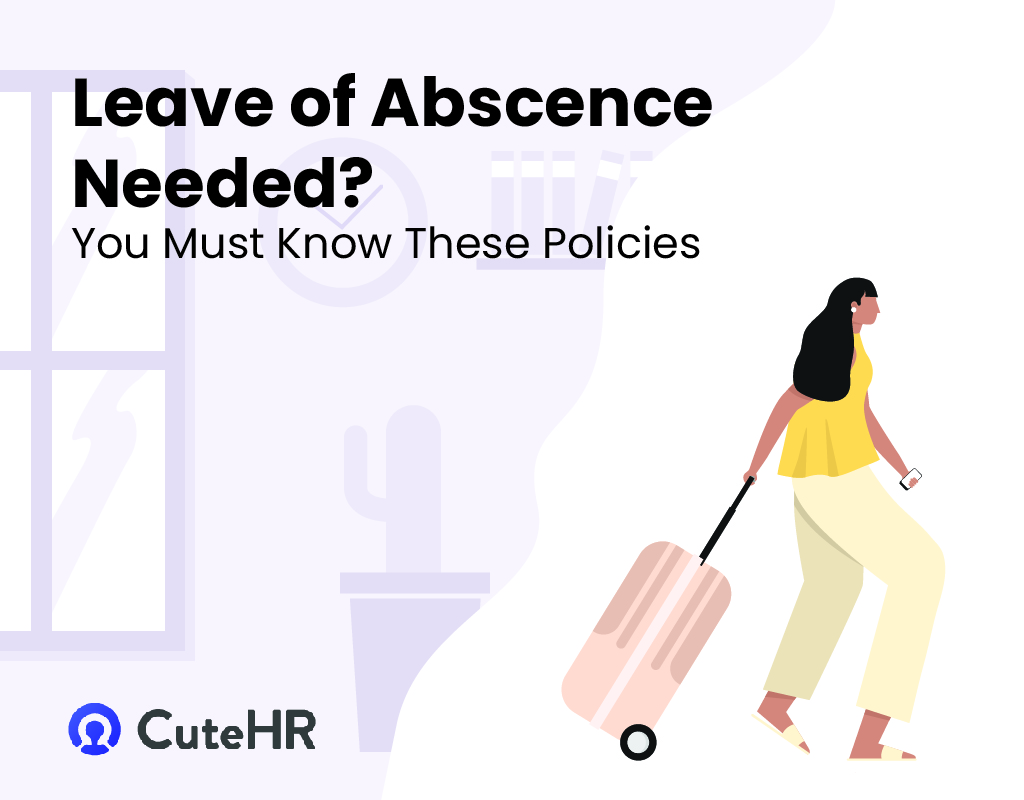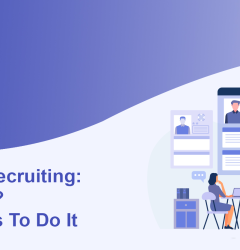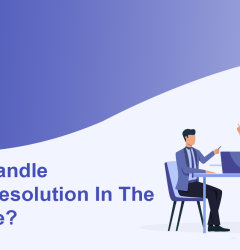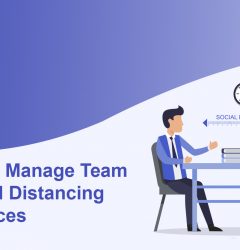15 Aug

“I won’t be working for three months. Can I take leave?” That’s an excellent question. At some crucial point in time during your employment, you may need to request a leave of absence for various reasons. Reasons can range from personal or family health problems, the birth of a child, relief from excessive stress, loss of a loved one, and down to the pursuit of a hobby or travel.
Different companies around the world have different kinds of leave policy. These companies write the number of leave available to employees in a contract.
Leave Of Absence is an extended period off from your job. Depending on the organization, you may be able to ask for time off from work. Alternatively, there may be a formal process you need to follow to get approved for leave. Leave of absence should be created appropriately regardless of the reasons behind it to maintain your good reputation at work. For instance, in a casual environment. Leave of absence can be saying to your boss, ‘I need a leave of absence, would it be possible to take a leave from work for a month?’ In a more formal workplace, you may need to construct your request in alignment with the company policy.
Table of Contents
Tips to Request a successful leave of absence
The company may have steps/formalities for who is eligible enough to leave, and how often one can take a leave of absence. It doesn’t matter if you’re full time, part-time, or time-tracker employee, you have rights as an employee to take some time off as a leave of absence. In writing for a leave of absence, do well to familiarize yourself with the company’s policies. A few tips help in requesting a leave of absence. Would you like to know these tips?
In this section, we will highlight some key points that you must have in your bucket before requesting for long leave. Read further to know more.
Know Your Rights Before scheduling a discussion with your employer
Make a research on your organization’s policy regarding leave of absence to know if the system addresses your situation. For instance;
- The Family and Medical Leave Act (FMLA) requires employers to provide employees with time off (without pay) for severe family and personal medical conditions requiring care. This Act includes instances of birth, providing parental to a child, and emergencies arising from a family member’s active military duty.
- Employees entitled to a Leave Of Absence for jury duty or if there’s a call into any active military duty.
Provide your Employer With As Much Lead Time as Possible Before The Beginning of Your Leave.
Advance notice will make it easier for your employer to fill the void left by your departure and make them more likely to accept your request. Your employee portal must be integrated with leave management systems to identify all long term leaves in the team.
Indicate an end date if possible in your situation, so your supervisor has the comfort of knowing when you will return.
Your application will likely go over much better if you can provide some idea as to when you’ll return. Even if you can’t give an exact date, it’s better to supply a general time frame of how long you expect to be gone.
Classifications of Employee Leave of Absence
Leave Of Absence is classified into two categories, namely:
- Mandatory Leave Of Absence
- Voluntary Leave Of Absence.
1. Mandatory Leave Of Absence
FEDERAL and STATE laws govern a compulsory leave of absence, and they include the following;
1.a. FAMILY AND MEDICAL LEAVE ACT {FMLA}.
The Family and Medical Leave Act, or FMLA, is a federal law that allows you up to 12 weeks of job-protected leave per fiscal year. With the proper medical documentation and supervisor approval, employees can take FMLA for any of the following reasons:
- To care for their child after birth, adoption/foster care.
- To care for their spouse, child, or parent with a severe health condition.
- For their serious health condition that makes them unable to perform the job.
However, as a manager, it is essential to understand whether an employee’s request could qualify under FMLA, how do you know this?
Which employees are eligible?
To be eligible, employees must have worked for their organization for at least 12 months. Additionally, they must have logged at least 1250 hours of service during that time.
An important thing to remember is that only companies with 15 or more employees are required to offer FMLA.
1.b. MILITARY LEAVE.
The military leave policy is a leave of absence from work granted to employees who participate in specific active or inactive duties in the country’s military. Employees who leave a civilian job for voluntary or involuntary military service are legally guaranteed the right to be reinstated in their former position upon returning from duty. Reinstatement includes a comparable job position, compensation, and benefits. To qualify for this category of leave from work;
- The employee must offer advanced notice, either written or verbal of the upcoming military service or training.
- The employee’s cumulative military leave cannot exceed five years, and he or she must be discharged honorably from military service.
There is an Act that protects the jobs of military service members who leave work to perform their military duties.
1.c. JURY DUTY LEAVE.
Jury duty availability is a mandate by law. Thus, employers in almost every state are required by law to provide an employee with time off from work to perform their civic duty. It does protect employees from termination because of their service on a federal jury. Jury duty leave provides a paid or unpaid absence from work when an employee is required to report for this duty.
1.d. STATE LEAVE OF ABSENCE.
Other specific leaves are protected and guided by the state laws which includes;
- VICTIM LEAVE
The leave is designed to protect the employee’s job when they have to attend judicial proceedings related to a crime. An employee may take this type of time off for different reasons. This reason can be any of the purposes related to domestic violence, sexual assault, to seek legal or law enforcement assistance, to ensure personal safety. Others include; to seek treatment by a health care provider for physical/mental injuries, to obtain or assist a family member get mental health. You must give advance notice that you intend to take time off.
The majority of the states also have their leave laws specifically for victims of domestic or sexual violence. Most of these laws allow employees the leave of absence to address the disorder and also, protecting them from termination due to the abuse.
- VOTING LEAVE.
Voting is for the eligible; therefore, eligible employees are expected to vote before or after working hours on election days. If an employee knows in advance that time off will be necessary to vote on an election day, he or she can request voting leave. The employee must make this request from the supervisor at least two working days before the day of the election. Any additional time off outside the hours recorded will be without pay.

2. VOLUNTARY LEAVE OF ABSENCE.
Laws do not require voluntary leaves. Companies offer a voluntary leave of absence as a courtesy to employees per company policy or per collective bargaining agreement with a labour union. These leave of absence are non-mandatory, you have them based on your discretion, and following the guidelines, you have set in your leave policy. Because this leave is not mandatory, there is no offer for job protection during a voluntary leave of absence. Under this type of time off, we have;
2.a. PARENTAL LEAVE.
Parental leave has no federal laws mandating employers to pay for it; the FMLA does only apply when employees meet the requirements stated earlier on.
Parental leave of absence is available to employees who welcome a new child into their family, whether by birth or adoption. Parental time off allows you to time away from work to care for your new child.
2.b. BEREAVEMENT LEAVE.
Bereavement leave is offered to an employee experiencing a significant personal loss due to the death of a member. It allows you to attend funeral services, ceremonies and make the necessary arrangements which might include travelling.
2.c. SICK LEAVE.
Sick leave is the time away from work used to care for your wellbeing or your dependent children, and immediate family members. As of Jan 1, 2015, California has enacted new employees to accrue sick leave days; to prevent the likes of flu sweeping through the workforce.
OTHER LEAVE OF ABSENCE OPTIONS.
Other options of Leave Of Absence includes personal and educational leaves. Although unpaid, it allows the employees to maintain their job while pursuing other interest.
Finally, Any business owner will tell you that it’s challenging to make a profit when your employees aren’t at work. Therefore as an employer, how can you minimize the effect an employee’s leave of absence has on your business? Also, how can you do this while still providing your employees with the time they need off work? With a fortress of laws protecting employees, you have to practice caution to guard against even more costly litigation should a dispute arise. Learn an action plan for when employees request a leave of absence and how to minimize the impact of employees’ time off on business.













Snehil Prakash